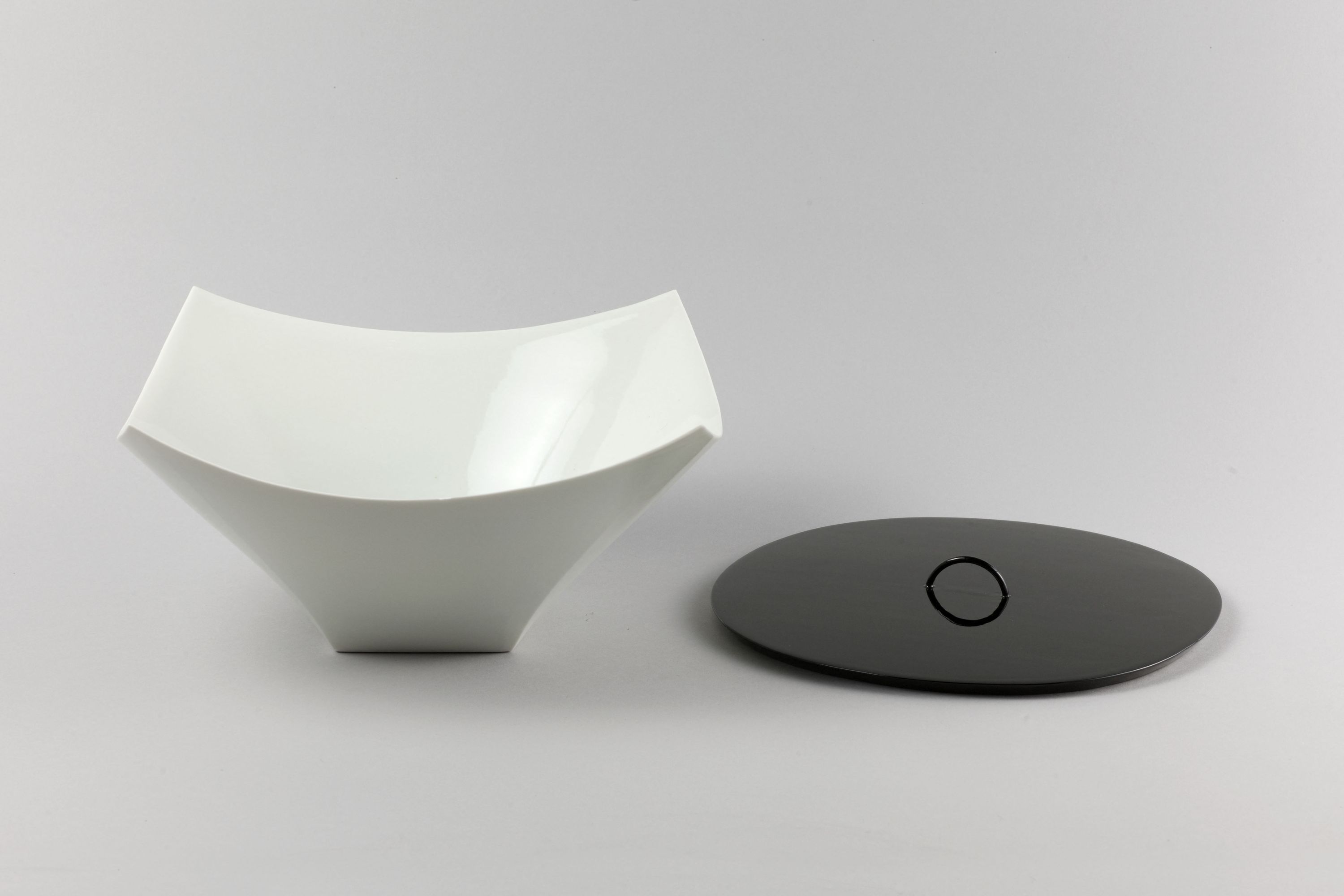
Mizusashi (récipient à eau froide)
Céramique, Porcelaine, Bois (matériau), Laque
Récipient (vaisselle)
Don manuel : Onimaru, Takayuki
M.C. 2012-21
The cold-water jar (mizusashi) is one of the indispensable objects used in the tea ceremony. It contains cold water for cooling the water in the cast-iron kettle, so as to bring it down to the right temperature for the tea powder. The lacquered wood or ceramic lid is placed next to the tea master on a small stand (futa-oki) to prevent it coming into contact with the straw mat.
The first stoneware jars in Japan dating from the 15th and 16th centuries, produced in the kilns of Bizen and Shigaraki, have robust shapes with firing effects. In the early 17th century, cold-water vessels were made of porcelain, often painted with motifs in underglaze cobalt blue. This is the material used by Onimaru in his works. In this piece he plays on the thinness of the walls and extremely sharply defined corners and edges. The reflections in the translucent glaze, of variable thickness depending on the surface (lip and wall), vary from white to a slightly bluish white due to a low proportion of iron oxide in the paste. His works have an elegant simplicity.
A graduate of the Tokyo University of the Arts, Onimaru creates new forms of the objects in the tea ceremony, while perpetuating the traditional arts. In 2010, he was selected for the Traditional Japanese Arts and Crafts Exhibition, and was awarded a special prize at the Hagi Taishou (Grand Prix) of Contemporary Ceramics. He was selected for the 4th Kikuchi Biennale in 2011, and won the silver medal at the International Ceramics Festival Mino.
The work acquired by the Cernuschi Museum was shown at the Cha no yu no gendai (contemporary tea ceremony) exhibition at the Musée Tomo, Tokyo (April 2012).
